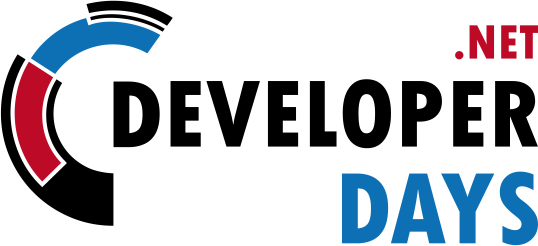
.NET
DEVELOPERDAYS 2024

Find solutions
With over 40 sessions during two days of conference and several all-day training sessions (pre-cons and post-cons), the conference may give you the inspiration to solve your current or future challenges.
Learn MoreStay Relevant
IT is a sector where the words “if you do not go forward you step back “ are nothing but true. Learn about the newest solutions, the future of .NET and visions that may become a reality. Or not.
Learn MoreNetworking
We expect to have many .NET specialists during .NET DeveloperDays 2024. Walk away from the conference with a new set of contacts!
Learn More
About .NET DeveloperDays 2024
.NET DeveloperDays is the biggest event in Central and Eastern Europe dedicated exclusively to application development on the .NET platform. It is designed for architects, developers, testers, and project managers using .NET in their work and for those who want to improve their knowledge and skills in this field. The conference content is 100% English, making it easy for the international audience to attend.
Event format
The conference will be held in hybrid mode.
For those who registered for in-person participation – at the venue and to register for online participation – remotely.
Pre-cons and Post-cons will be held only in an in-person format.
See the summary video from the 2023 edition
Location
Sponsors
If you would like to speak to our participants, get to know them a little better and present your company to a wider audience, take a chance and become a .NET DeveloperDays Partner!
Testimonials of participants from past editions
It was my first time here, all was really good. I can’t suggest anything just be like this, great 🙂
This conference just keeps getting better and better! Congratulations on yet another successful event!
It is a great option to participate online. Please stay with that possibility in the next conference. Everything works fine with online transmission – I don’t have any trouble with quality and sounds.
Everything was really good, I enjoyed the conference.
It was a great experience.
We participated with my team first time in such event (we belong to a medium-sized automotive company with a newly founded small internal SW developer team). As general we really loved the presentations and speakers; learned a lot of new interesting things, also confirmed that we do the right things about some method.
Lectures were very well prepared by speakers, using relatively simple English – everything was perfectly understandable. Speakers were nice, and often available to discuss after the lecture – great! Thank you for the nice 2 DeveloperDays 😉
